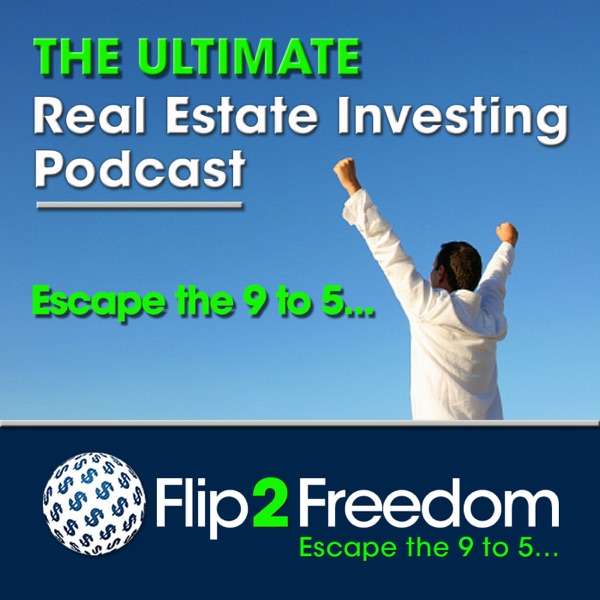We all hear stories of highly lucrative angel and venture capital investments. But without an existing portfolio and a Rolodex full of Silicon Valley contacts it can be hard to identify the right opportunities.
So what are the telltale signs of a founder or company that is destined to succeed? Or the warning signals of one that isn't? And how do you meet them in the first place?
To find out we spoke to Tristan Pollock who, after successful exits from his two previous companies -- Social Earth and Storefront -- has made the move into the venture capital world.
Tristan is the entrepreneur in residence and venture partner at 500 Startups.
500 Startups is the world's most active venture firm based in San Francisco with nodes and investments across the globe, with nearly 2,000 investments in their portfolio since starting out six years ago.
In this episode we talk about Tristan's successful exits from his two companies, Social Wealth and Storefront; his transition to venture capitalist and advisor to startup businesses; and what green and red flags he looks for when evaluating new investment opportunities.
Entrepreneur in residence
This is a title we're seeing more often in the venture capital world, says Tristan.
Typically, the entrepreneur in residence (EIR) will be brought in on a salary or stipend to assist the firm with their portfolio and in evaluating new potential investments. Usually, the firm will also be investing in the EIR's next company.
This is all a part of the 500 Startups program but in addition, their EIRs will spend time with their accelerator program, advising younger founders and companies on a weekly basis.
The 500 Startups accelerator program
Through this four month program, Tristan predominantly helps startups in three main areas:
- Growth
For the first two to three months, the focus is on trying every growth experiment possible and on testing and iterating on every available acquisition channel.
- Storytelling
In the last month or two, the focus shifts to how the startups are pitching their companies. This can be a challenge for founders at first because they are so deep in the weeds of their product that it can be difficult to take a step back and simplify their story.
Investors need to be able to quickly understand what is interesting about them and what differentiates them from other companies.
It's also important to be able to communicate the problem or pain that a product solves. People need to feel a pain, says Tristan, in order to adopt a new product -- as an investor, or as an end user.
- Fund raising
As part of the program, founders will be introduced to the investor network in San Francisco and coached through the process of finding funding.
Bootstrapped vs. venture funded
Tristan has experienced both forms of entrepreneurship. His first successful company, Social Earth, was self-funded. Whereas Storefront, his following venture, was backed by 500 Startups and went through their accelerator program.
There is no one-size-fits-all route. Some founders want to maintain control of their companies and stay true to their vision for the product.
Others feel that there are skills that they need or a network they need to build, which they can only get access to through an incubator or accelerator program.
Tristan describes the 500 Startups accelerator program as an important part of getting him and his company up to 'San Francisco' speed, as he calls it.
Tristan Pollock's entrepreneurial story
Tristan is a Minnesota kid. He and his co-founder Erik Eliason bootstrapped their first business, Social Earth, with no outside funding and without an existing network.
Before Huffington Post's 'Impact' section, there was a huge gap in reporting positive news around the solutions affecting social change. Around the same time, social entrepreneurship, purpose before profit, and the 'triple bottom line' were becoming widely recognized terms.
They launched Social Earth, a content business, which grew organically and became the leading source of news in the social impact niche and a strong brand, allowing them to be their own bosses and work on a project they really cared about.
Three years in, they were approached by a number of potential buyers and sold the company to 3BL Media, which gave them the funds to transition into their next company, Storefront.
After taking a break, the co-founders got back together. While walking the streets in Minneapolis and speaking to friends and family, they noticed a trend of vacant storefronts. It turned out that 10% of stores in the US are sitting empty.
At the same time, the pop-up retail trend was growing. Many small businesses who couldn't commit to five-year leases, were looking for short term rentals to hold art exhibitions, launch a fashion brand, etc.
Triston and Erik saw an opportunity to create a marketplace to bring these two needs together. In the summer of 2012, they tested the idea in their local area as a basic MVP (Minimum Viable Product) while interviewing for AngelPad, a San Francisco accelerator.
They were accepted into the program and at three days notice moved over to California and spent 10 weeks sleeping their four person team in a one bedroom apartment, hacking the first version of Storefront together.
After the accelerator program, they reached demo day where they had the opportunity to pitch their new product to investors in just three minutes. Through networking at the event and setting up meetings, they went through a period of five investor pitches per day and were able to close a round of $1.6million in March 2012.
They successfully sold the company in 2016 to a French company called Oui Open who was expanding globally and wanted access to the US.
After this experience, Tristan wanted an opportunity to give back to the entrepreneurial community, and so came to join 500 Startups.
Identifying early stage startups for investment
With financial projections and limited quantifiable information, it's more of an art than a science at the early stage. Tristan talks us through the flags he looks for.
Chief among them at this point is to look at the founders and core team. One of the first and most obvious signs is previous experience and past successes. If a founder has proved that they have what it takes to execute by grinding it out on something they care about, then you can feel more confident about their next venture.
Listen in to the interview for more.
Red flags
Tristan relies on pattern recognition to identify warning signs of an inexperienced or untrustworthy founder.
Things like:
- Being very salesy in meetings;
- A combative relationship with their co-founder - perhaps they haven't been working together very long; or
- A know-it-all character that isn't easily coachable or is closed off to feedback.
Instead, he would prefer to see a strong sense of empathy from a founder that can empower people and inspire diverse teams.
Tristan has written an article on Silicon Valley etiquette which you can read over here. He has also compiled a list of some of the strangest pitches he has seen, which are certainly red flags.
Investing in startups for the first time
500 Startups offers a course through Stanford called VC Unlocked, which can be a good starting point.
Outside of that, it's important to start building a network around VCs and founders that you trust to get introductions to potential opportunities. When you're starting out as an angel you will need to piggyback on other people because your check size is smaller.
You'll want to get in on opportunities early with founders that have some of the positive signals mentioned above. You may not invest in the first opportunities you are exposed to, but they will give you a valuable learning experience.
In many cases, investing in startups is similar to investing in real estate. You may want to have 25-50 investments in your portfolio to increase your odds of one of them bringing a positive return.
It's important to appreciate the passion, grit, and resilience that founders need to display in order to create their companies and so fostering a relationship of respect between investors and founders is key.
You can reach Tristan on Twitter @Pollock or his website.

 Our TOPPODCAST Picks
Our TOPPODCAST Picks  Stay Connected
Stay Connected







